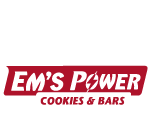A guest post by Will O’Connor, Sport Scientist, Massey University School of Sport and Exercise Science
Recently I ran the inaugural Taupo Ultramarathon 100km event along the stunning Great Lake Trail which runs from the western to the eastern side of Lake Taupo. So I thought the endurance enthusiasts out there might be interested in what the energy demands are for an ultramarathon and how that relates to what you actually need to eat.
As I’m a sport scientist I have a lot of data on myself and I know from laboratory testing that when I’m running 6min/km on a treadmill I burn around 800kcal/hr. I get 40% of my energy from carbohydrate and 60% of my energy from fat. In efficiency terms this is pretty good. If I wanted to burn more fat I could limit my carbohydrate intake during training but for me this ratio works and is sustainable.
The Taupo Ultra 100km took me 10hr 36min (avg 6:22min/km) which looks like this in energy terms: 8,400 kcal (35146 Kj), which is equivalent to 48 OSM bites; 945g carbohydrate (90g/hr); 441g fat (42g/hr).
So how does this compare to what I ate/drank? This is what I fuelled up with:
15x OSM bites (333g carb) – every half an hour after the first 2 hours; 5x Snickers bars (50g carb) – at 60km, 68km, 80km, 85km, 87km; 2x 200mL energy drinks (44g carb) – at 50km and 77km; 300ml Coca Cola (30g carb) – 80km onwards; 1x Fruit bar (16g carb) – at 80km; 1x Energy gel (25g carb) – at 87km.
And my totals:
Total carbohydrate = 498g (1992 kcal)
Total fat = 107g (963 kcal)
Total protein = 70.5g (282 kcal)
Total energy = 3237 kcal (13544 Kj)
So if I burnt 8,500 kcal but only ate 3237 kcal where does the other 5163 kcal come from? The short answer is stored carbohydrate (glycogen) and body fat. The average male athlete can store around 500g of carbohydrate in the muscles and liver as glycogen, which is available during exercise. If you use all of this glycogen too quickly you’ll “hit the wall” and this is why pacing is so important. By the time I had finished the race I had burnt 445g more carbohydrate than I had stored in my body.
However, by eating 500g of carbohydrate throughout the event I wasn’t at risk of hitting the wall because I was taking carbohydrate from both my muscle and stomach. This combined with the fact that I’m reasonably efficient burning 60% fat means I was able to rely predominantly on my stored body fat and as a result was able to have energy for the whole duration of the race. Eating fat isn’t as important because we have an almost infinite supply of energy in stored body fat (1kg = 9000kcal) whereas only 500g (2,000kcal) of carbohydrate. Eating fat during an event is more to settle the stomach and stop you feeling hungry and to avoid overeating carbohydrate, or more specifically sugar, which can upset the stomach if you eat too much at once. This is why OSMs are so good for the longer slow stuff because they have the perfect balance of fast and slow releasing carbohydrate as well as some fat and protein.
If you struggle with energy fluctuations in training and racing, you no will doubt benefit from improving your ability to burn fat as a fuel, otherwise known as metabolic efficiency. Some quick ways to do this are with fasting (without food) morning training sessions, limiting the amount of carbohydrate you eat within the first hour of exercise and by having two days of limited carbohydrate before a big training session.
Also, if you’re planning to head outdoors for more than couple hours, I always suggest planning how you’re going to fuel yourself and throwing in a couple OSM bars for emergencies.
Got a question about how to use OSM for your specific activity? Post in our comments section and you could find your answer in Will’s next OSM guest blog!
Follow Will O’Connor on Twitter or Instagram.






